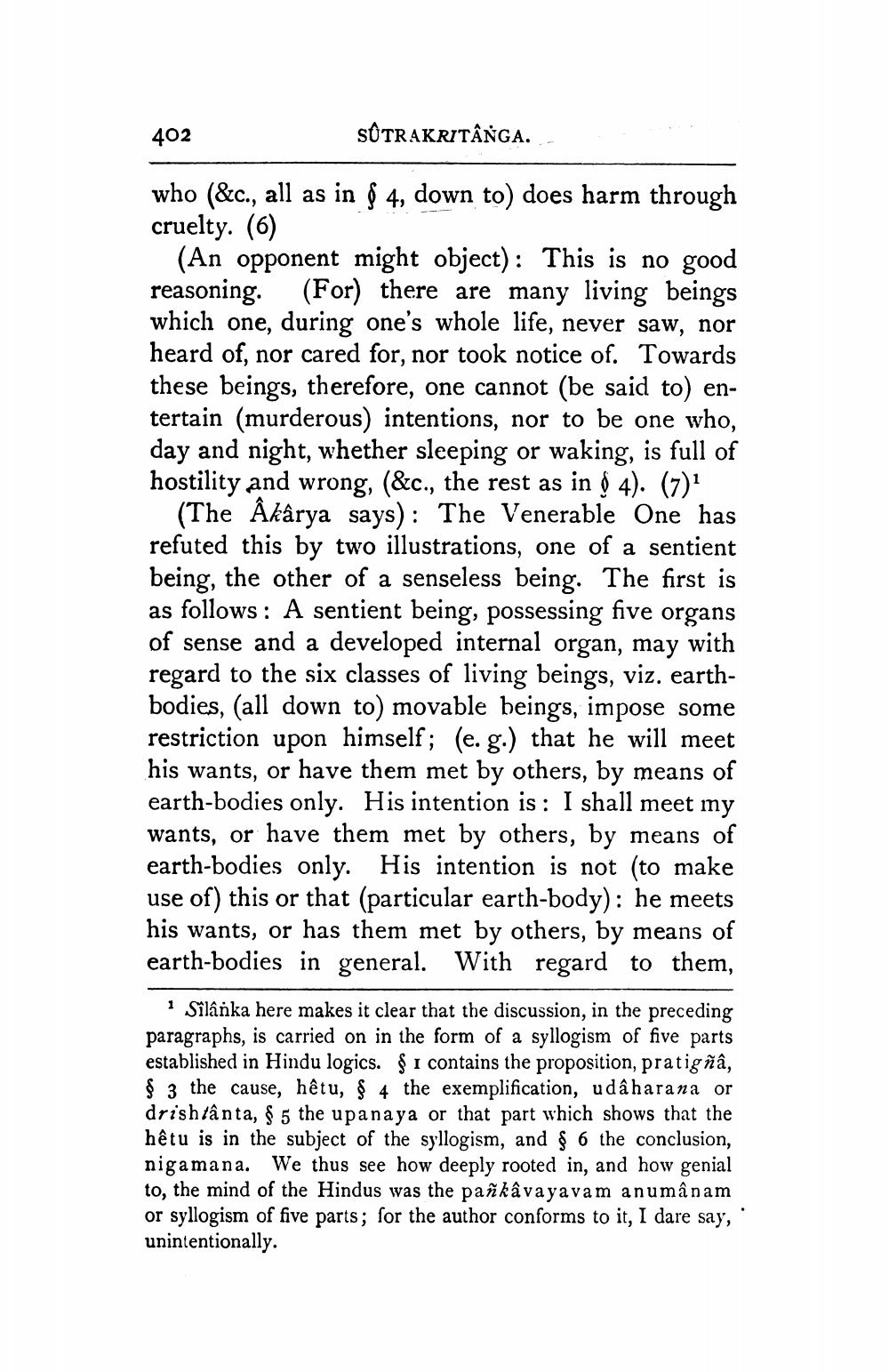________________
402
SÔTRAKRITÂNGA.
who (&c., all as in § 4, down to) does harm through cruelty. (6)
(An opponent might object): This is no good reasoning. (For) there are many living beings which one, during one's whole life, never saw, nor heard of, nor cared for, nor took notice of. Towards these beings, therefore, one cannot (be said to) entertain (murderous) intentions, nor to be one who, day and night, whether sleeping or waking, is full of hostility and wrong, (&c., the rest as in & 4). (7)
(The Âkârya says): The Venerable One has refuted this by two illustrations, one of a sentient being, the other of a senseless being. The first is as follows: A sentient being, possessing five organs of sense and a developed internal organ, may with regard to the six classes of living beings, viz. earthbodies, (all down to) movable beings, impose some restriction upon himself; (e. g.) that he will meet his wants, or have them met by others, by means of earth-bodies only. His intention is : I shall meet my wants, or have them met by others, by means of earth-bodies only. His intention is not (to make use of) this or that (particular earth-body): he meets his wants, or has them met by others, by means of earth-bodies in general. With regard to them,
Sîlânka here makes it clear that the discussion, in the preceding paragraphs, is carried on in the form of a syllogism of five parts established in Hindu logics. § 1 contains the proposition, pratig ña, $ 3 the cause, hêtu, § 4 the exemplification, uda harana or drish tânta, § 5 the upanaya or that part which shows that the hêtu is in the subject of the syllogism, and § 6 the conclusion, nigamana. We thus see how deeply rooted in, and how genial to, the mind of the Hindus was the pañkâvayavam anumânam or syllogism of five parts; for the author conforms to it, I dare say, unintentionally.




